Crucial MX200 (250GB, 500GB & 1TB) SSD Review
by Kristian Vättö on May 22, 2015 8:00 AM EST- Posted in
- Storage
- SSDs
- Crucial
- MX200
- Micron 16nm
Random Read Performance
For full details of how we conduct our Iometer tests, please refer to this article.
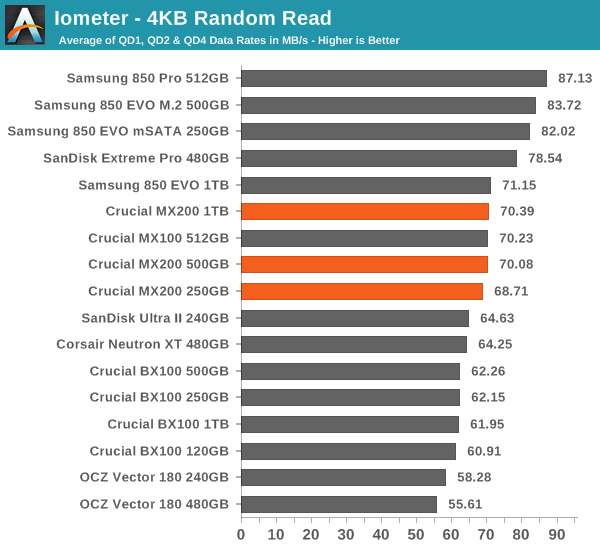
Random read performance is typical to Crucial's Marvell based drives a bit better than the BX100.
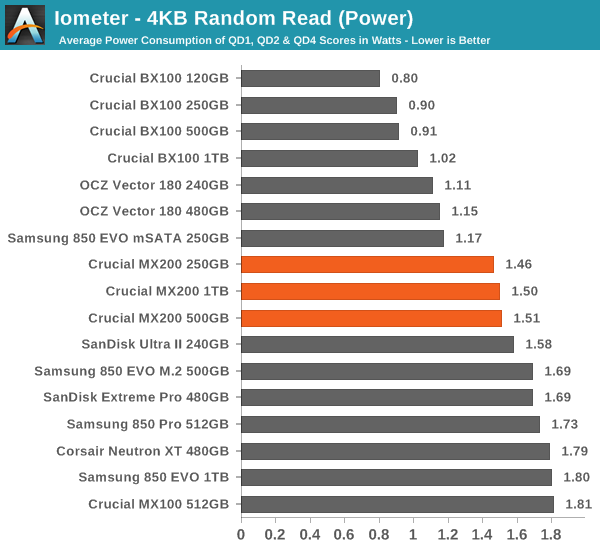
The power consumption is fairly average too, resulting in good efficiency.
 |
|||||||||
Looking at the scaling with queue depth, the performance increases smoothly across all queue depths and capacities. It's not 850 Pro level, but I suspect the NAND has its play in this too.
Random Write Performance
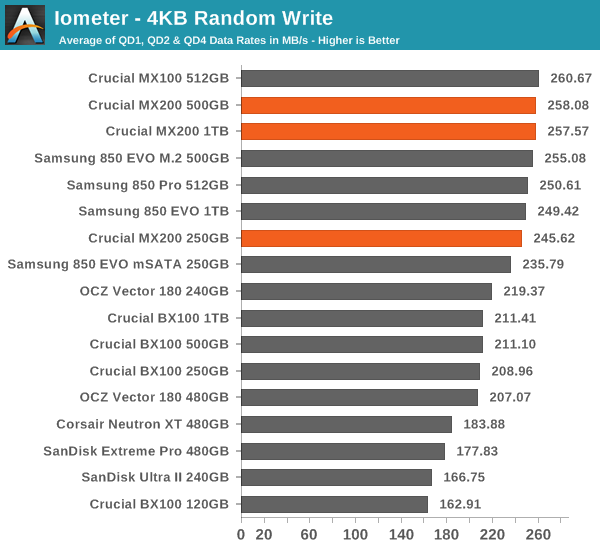
Random write performance, on the other hand, is top of the class and similar to the MX100. Crucial's Marvell based SSDs have always had excellent peak random write performance and the MX200 finally adopts the performance to steady-state too.
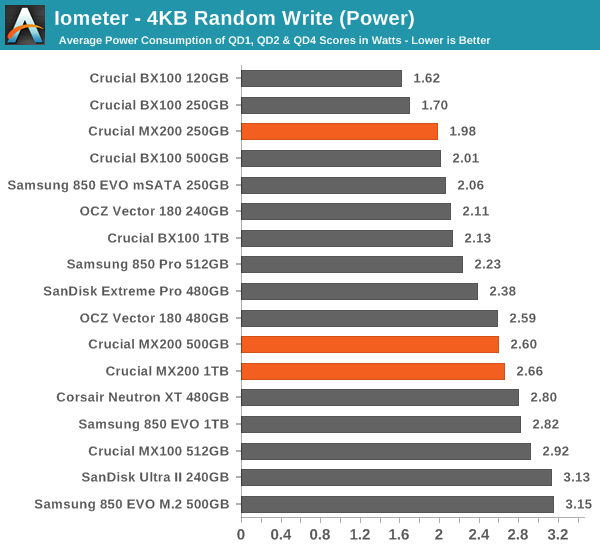
Despite the high performance, the power efficiency is good. The SLC cache in the 250GB model shows it's advantage because the performance is nearly the same, whereas power consumption is considerably lower. Writing to SLC NAND is more power efficient because each write operation requires less programming pulses to set the correct voltage state, although the downside is that the MX200 will basically rewrite all data to MLC later, which will defeat any power savings as we saw in our Storage Bench traces.
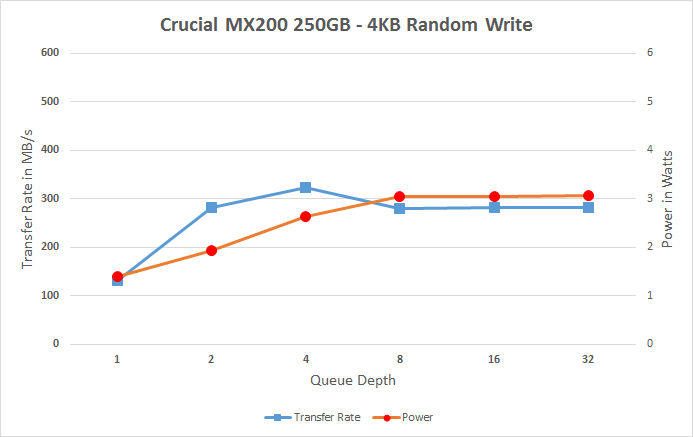 |
|||||||||
Especially QD1 and QD2 performance is great and the throughput also scales well with queue depth. The 250GB model hits the wall of its SLC cache in QD4 (half of the drive is now filled with data i.e. the whole SLC cache), so the performance takes a slight hit while the drive moves existing data from SLC to MLC and processes new write requests from the host.










62 Comments
View All Comments
KAlmquist - Saturday, May 23, 2015 - link
I'm hoping that once other companies get 3D NAND into production we will see some interesting competition for Samsung.austinsguitar - Friday, May 22, 2015 - link
I love how they post this but not the mx100 tests.... whats the FKING POINT in testing than?Ryan Smith - Friday, May 22, 2015 - link
I'm not sure I follow. The MX100 is in our graphs.earl colby pottinger - Friday, May 22, 2015 - link
Question about the hardware encryption.Where does the key come from? Can I set my own key?
The reason I ask is, if all the drives have the same key from the manufacturer then it is like there is no key at all. As if you know one key you know them all.
If it is made by a random number generator, how do we not know there is a pattern from the generator so a hacker only needs to do a few thousand (million?) tests to break the encryption?
If on the other-hand we can set the key, is it easy to do? Is the key such that we can write it to the drive but it is hard to read out?
Vinchent - Friday, May 22, 2015 - link
Wow I just purchased the MX200 250GB a couple of days ago.If I had read this article before, I wouldn't have bought it.
btw, thanks for this great article, AT :)
RandUser - Saturday, May 23, 2015 - link
Lol, same for me here. Should have gotten a BX100. The MX200 performs without problems though, so no point returning it, just it's not the best value for money.MrSpadge - Saturday, May 23, 2015 - link
If you don't fill it in a sudden rush, it's still a fine drive. Not the best choice, but not terrible either.PaulBags - Friday, May 22, 2015 - link
The Samsung 850 pro 1tb is missing from most charts, disappointing.Sejong - Friday, May 22, 2015 - link
No comments on the NAND being 16nm? Is this not an issue? I am reluctant to buy MX100, 200 and BX100 when there is M500 still in stock (the price seems to be rising).Another review request : Intel`s new SSD 535 (this seems to use hynix 16nm NAND memory).
MrSpadge - Saturday, May 23, 2015 - link
No, it's not an issue. Even with "just" the guaranteed endurance it's going to last a long time. And very probably a lot longer, as in any SSD which is not under continous sustained use (which would cause very high write amplification).